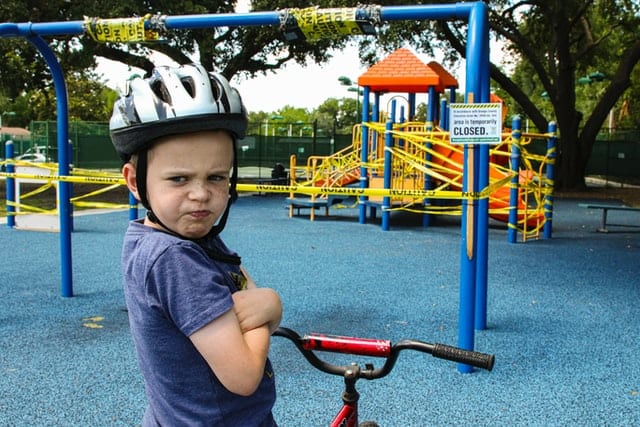“THEY NEVER LISTEN!!”
Has this ever happened to you? You are trying to get out of the door in the morning and your child is doing everything except what you are telling them to do. Playing with cars even though you asked them to get their shoes? Running around the bathroom when you are trying to brush their teeth? You then lose all patience and resort to yelling? Then your child cries, you’re frustrated (and also want to cry), and you finally get out of the door 10 minutes late? Well if this doesn’t sound familiar, you were either gifted a unicorn of a child or have the patience of a saint.
If you can see yourself in the above situation, like most parents can, then you might be able to benefit from using the following communication strategies with your child.
1. Setting the Foundation
This is likely the most important part of the equation, and the most difficult. In order for your child to be most likely to follow through with instructions you need to ensure the following:
- Eye contact with your child;
- Eliminate distractions; and
- Make sure you are able and committed to following through
The reason this piece is often so difficult is often we are often giving children instructions while we, ourselves are multitasking. Imagine being at work, and you are in your office keeping busy. Your boss is shuffling around in her office completing her tasks while also hollering additional tasks for you to complete. You might miss what she said because you were focused on what you were doing. You might also be confused. Or even hear the completely wrong instructions.
This is what it is like for your child unless you take a moment to stop what you are doing and address them directly. When your attention is fully on your child for these moments, it is also easier to hold them accountable in the moment – not 5 or 10 minutes later when you enter the room and they haven’t moved.
Once you have set the foundation of consistently following through, and your child starts complying pretty consistently you can relax a little with the structure. So while this will take more time at the beginning, their compliance will increase and you’ll ultimately save time and frustration.

2. Give the Direction as a Statement
Children at this age are still figuring out all the intricacies of language. There are so many nuances! Asking a question like “Will you get your shoes?” or “Can you start cleaning up?” implies an option to say no or decline. Your child genuinely thinks this request is optional. Your child is not actually being noncompliant when telling you “no” when they are asked to do something. – they are simply answering a question. So imagine their confusion when they are suddenly in a bit of trouble for not listening or “talking back.”
Instead, tell your child directly what you need them to do in a calm and assertive voice. Examples include, “Put your toys in the basket.” and “Come sit at the dinner table.” You might be worried that you will sound too firm or harsh when giving directions this way. However in my experience quite the opposite is true. Your child needs clear expectations at this age in order to succeed – and they want to succeed! Delivering commands directly is not unloving, unkind, or being a dictator. It is communicating in a way your child best understands.
3. Use “If, then” Statements
While your child does want to succeed, sometimes they also just don’t want to do the thing you need them to do. I mean if I was having a grand ‘ole time working on a hobby, I wouldn’t want to abruptly stop my activity to do something boring like brush my teeth. Luckily, my brain can also process that this fun activity will be waiting for me in the future, and that having cavities filled is time consuming, costly, and very uncomfortable. Your child’s brain is not capable of thinking this way yet.
You can verbally pair their behaviors with a consequence with an “If, then” statement so they can make an informed decision. “If, then” statements are essentially “If you [don’t do the thing I just said], then [this is the immediate consequence].” Some examples are:
- While in the bath: “If you don’t put your head back while I wash your hair, then water will get in your eyes.”
- “If you don’t walk to the table now, then I will pick you up and carry you.”
- “If you pull on that, then it will fall and hit you.”
Use this if your child has not started to comply with your command within the first 5 seconds of giving it. **Note: You are counting in your head and not outloud.** Otherwise, your child will learn they don’t have to do what you say until “…four…” General rules to make the consequence most effective are:
- Make it something immediate
- Related to the behavior, and
- Something you will actually follow through with.
If there is too much time between the behavior and consequence (i.e. no TV after school for not getting dressed this morning when asked) it loses all its power. Young children make decisions based on the present moment experience. A consequence in the future doesn’t help guide their decision making or learning in that moment.
Additionally, you want to be very sure you are willing to follow through with the stated consequence. When your child tests the boundaries like all children do (and should, developmentally speaking), you do not want them to learn you were bluffing. That just sends the message “You don’t actually have to listen sometimes when I tell you to do something.” This of course increases noncompliance. So don’t threaten to cancel the family trip to the zoo – unless you will actually cancel the family trip to the zoo.
4. PRAISE! PRAISE! PRAISE!
This is equally as important as the previous steps. Once your child starts making efforts to follow through with the direction you gave – praise them! It can be as simple as a high five, knuckles, or an excited “Thank you!” or “Good listening!” Anything that shows positive attention for their compliance.
This is important because children aren’t intrinsically motivated to do the right thing, nor do they always know what the “right thing” is yet. They are still learning. And they learn by how the adults around them respond to their behavior. So if we are giving a consequence for noncompliance, then we need a positive reaction when cooperating. They essentially learn, “If I do what my mom says I get good things in return! Well let me keep on doing what mom says because this is nice!”

Going back to the teeth example, your child couldn’t care less if their teeth are clean. They do care very much about receiving positive attention from you. So if they get nothing from you when they listen, or even hear something like “well it’s about time” in an exhausted voice they didn’t learn that brushing their teeth was the desired behavior. Praising or generally engaging with them positively while they cooperate is how they learn this was the desired behavior. This leads to them being more likely to comply next time as good things happened when they complied last time.
In summary, yes this seems like more work. In reality, it saves you and your child time, frustration, and tears. It helps benefit the parent-child relationship because everyone is more relaxed when your child has clear expectations communicated to them in a way they can understand and succeed. Of course, it won’t turn your child into a fully compliant robot, but it truly eases the burden.

Christina Moak, LPC has a passion for helping children, adolescents, and parents with a variety of concerns including behavioral issues, school performance, anxieties, social issues, depression, and life transitions.
Other parenting articles:
- 5 Common Timeout and Ignoring Mistakes – and How to Correct Them
- 15 minutes of play each day can keep the tantrums at bay
- How to prepare your firstborn for your second born
- An open letter to the mother who feels guilty “taking a break”
- The benefits of playing with your child
- How can dads help with the mental load?

